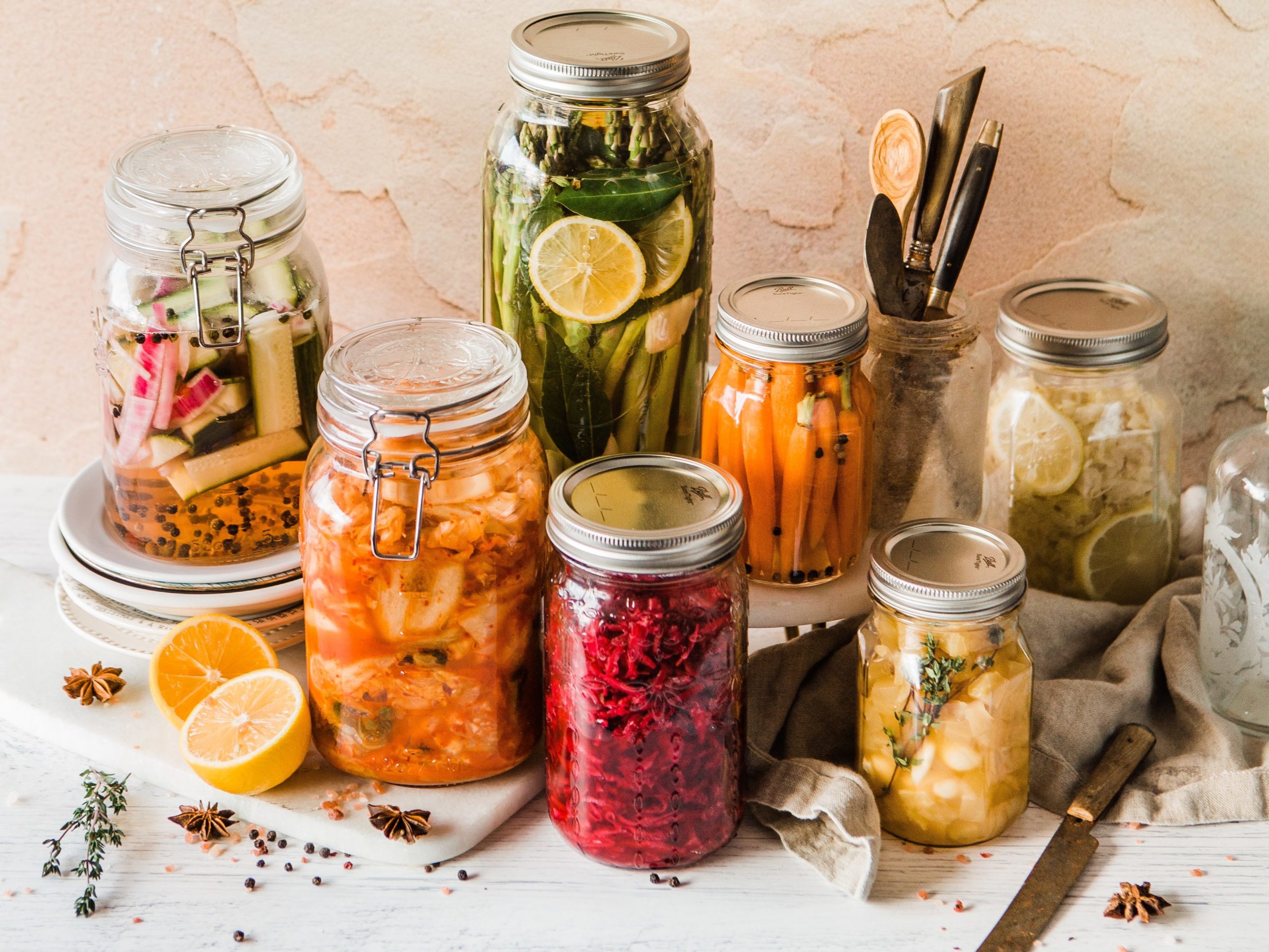How to Ferment Anything – Fermented Food Benefits, Risks, and More
Fermented foods might seem intimidating, but there is an easy way to do it that is time efficient and easy. Eating fermented food have a lot of benefits, but do come with some risks if not done right.

Here are the benefits of fermenting foods, the risks involved, and a complete how-to guide for fermenting anything you want!
Fermentation is a great way to increase the nutritional value of food, improve gut health, and increase wellness easily. Learn everything you need to know about fermented foods today!
What is Fermentation
By dictionary definition, fermentation is the process of converting carbohydrates in food to alcohol or organic acids using yeast or bacteria in anaerobic conditions. In other words, it’s changing the sugar in food with the use of bacteria in a sealed, airless environment.
Fermenting food relies on the enzymatic activity of good bacteria to break down carbs to preserve foods.
The most common foods that are fermented are dairy products, grains, and vegetables.
What are the Benefits of Fermented Food
There are many benefits to fermented food. These are very high in probiotics, natural bacteria that can help balance the microbiota and improve gut health.
The gut is responsible for the creation of about 90% of our serotonin, a happiness hormone. It also plays a large role in immune response, muscle development, and digestion, therefore it’s important to help balance it with probiotics.
A study from Stanford University found that fermented foods can help reduce inflammation throughout the body, reducing damage to joints, organs, and arteries. There is an increase in antimicrobial response, antioxidant properties, and nutrient absorption in the body as well.
Fermentation is also a great way to save food, as fermentation preserves foods while increasing the nutrient content. Longer shelf life and more nutrients? Sign me up.
Why Should Make Our Own Instead of Buying it?
Whenever possible, it is important to make your own fermented foods instead of buying them at a grocery store. Store-bought fermentation products are usually filled with preservatives that kill any live culture in the product. Preservatives increase shelf life, but at the cost of our microbiome balance. Some studies have even shown that preservatives in processed foods disrupt our gut health.
Making our own fermented products also allows you to use sea salt, which has trace minerals that are vital to wellbeing.
It’s also more expensive to buy high-quality fermented foods that have no additives. A 14-ounce jar of kimchi (fermented Napa cabbage and spices) can set you back about 7 dollars, and when a serving size is 4 oz, that will not last long.
Risks of Fermented Food
As with anything that requires fermenting, there is a chance that bad bacteria are introduced. By following the steps below, this should not be an issue, but just know that if your ferment smells rotten, if you see any sort of mold, toss it out.
Additionally, if you are just starting to eat fermented food, you may feel bloating temporarily as good bacteria settle into the gut.
How to Ferment Anything
Popular fermented food includes cabbage, onions, garlic, carrots, peppers, and much more! Basically any vegetable you can stick in a jar you can ferment.
While there are many techniques for fermenting, here is the easiest way to do it. Bad bacteria cannot grow in a saline solution of 1.5%, so by using that, we can cultivate the good kind for our gut!
All you need are vegetables, salt, water, a jar, and a dish. The first thing to do is to make a salt brine, a water-salt mixture. This is done by adding 1.5% salt per 1 liter of water, which means you add 15 grams to 1 liter.
Add vegetables to a jar and then add this brine to the jar, making sure the liquid covers the vegetables entirely. Add a small dish on top to push all the vegetables underneath the brine. Close the jar, make sure it’s airtight, and leave it out for up to two weeks, opening the jar to let out gases daily. After two weeks you have fermented vegetables! Add to meals like salads and soups or eat as a side dish.
Quick Tips for Fermentation
Here are some tips and tricks to make sure your fermentation journey is smooth.
- Use sea salt – sea salt has trace minerals that are vital to health, so try to use sea salt whenever possible.
- Make sure every vegetable is submerged – any unsubmerged vegetable is exposed to bacteria that can ruin the ferment. Make sure everything stays underwater!
- Add spices – spices like garlic, black pepper, cumin, and others can make the taste of fermented vegetables extraordinary!
- Use many vegetables in one jar – adding more than one vegetable in a jar saves space, and time, and lets all the flavors marinate together.
- Add some heat – like spice food? Add some hot peppers and ferment those to add a kick to the entire jar. The hot peppers will seep into the other vegetables.
The Takeaway
Fermenting foods may sound intimidating, but this easy recipe will allow you to ferment basically anything. All you need to do is make the salt brine, add it to vegetables, and let it sit for a couple of weeks. Fermented foods offer many benefits, and as long as you follow the tips and advice, there should be no risk involved.
Make sure you are watching your ferment, releasing air when needed, ensuring everything is submerged, and trying out new flavors for fun.
Health starts from within. By providing your body with nutritious foods, you can grow, mentally, physically, and emotionally. Fitness includes mental, emotional, and physical wellness, so remember to work out, do self-care, and add healthy habits you can nurture.
This whole article targets microbiota health! Fermented foods can help you balance the gut microbiome, leading to improved muscle growth, improved mental health, clear skin, boosted metabolism, improved immune system, and improve digestion! Gut health is vital in absorbing nutrients and allowing the body to thrive. Get all your gut health resources here for free today!





